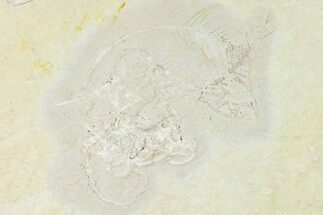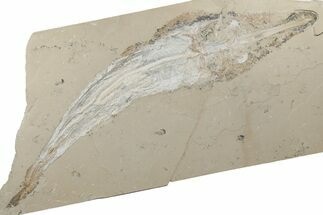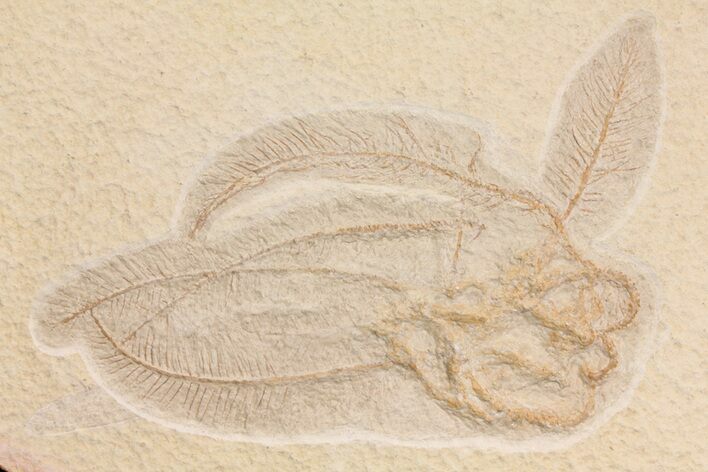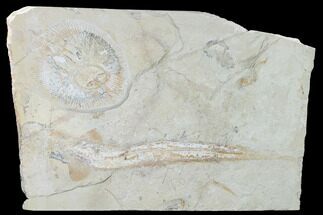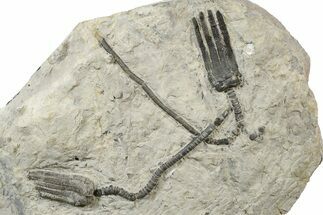This Specimen has been sold.
6.9" Floating Crinoid (Pterocoma) Fossil - Solnhofen Limestone
This is a beautifully preserved floating crinoid (Pterocoma sp.) from the Jurassic (~150 million year old) age Solnhofen Limestone in Germany. While most crinoids attached themselves to the sea floor with a stem and holdfast, crinoids of the order Comatulida, also known as feather stars typically do not have stalks. They live on the seabeds and reefs in tropical or temperate waters.
Upon request we can install a backing and french cleat style wall hanger at no additional charge. Otherwise this specimen will be accompanied by a metal/acrylic (gibson) display stand.
Upon request we can install a backing and french cleat style wall hanger at no additional charge. Otherwise this specimen will be accompanied by a metal/acrylic (gibson) display stand.
The Solnhofen limestone is a famous Upper Jurassic lagerstätte in Germany. It is where one of the most famous fossils of all time, Archaeopteryx, was found. The fine-grained limestone makes excellent building material, which has led to heavy quarrying over the past two centuries. In the process, some spectacular fossils were unearthed, including fossil dragonflies, fish, pterosaurs, shrimp, horseshoe crabs, and many more.
This area represents an ancient archipelago at the edge of a sea. Due to high salt content, the lowest levels in the water column could not support much life and were largely devoid of oxygen. This lack of oxygen and scavengers on the bottom of the sea led to beautiful fossil preservation.
This area represents an ancient archipelago at the edge of a sea. Due to high salt content, the lowest levels in the water column could not support much life and were largely devoid of oxygen. This lack of oxygen and scavengers on the bottom of the sea led to beautiful fossil preservation.
SPECIES
Pterocoma sp.
AGE
LOCATION
Germany
FORMATION
Solnhofen Limestone
SIZE
6.9" wide crinoid on 17 x 12" limestone
CATEGORY
SUB CATEGORY
ITEM
#165849
We guarantee the authenticity of all of our specimens.
 Reviews
Reviews

